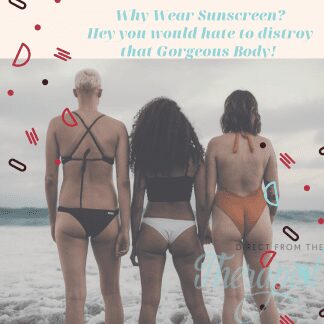Beauty Talk Why Wear Sunscreen
Beauty Talk Why Wear Sunscreen : It’s just common sense; we know the danger of overexposing ourselves to the sun. However after speaking to a friend during the week, it came home to me; I must get that message out there! how exposure at a young age can affect our looks in older age and the dangers involved.
My friend always looked fantastic in her teens and her 20’s; beautiful body, fit and healthy, very tanned (from laying in the sun for hours). Now my friend in her Forties, she really looks like she is in her late 50’s and she knows that. She said ” If only I knew what the sun would do to my body and my looks, not to mention all the sunspots she has had removed”. She now coats herself in Tinted Sunscreen and Fleur De Mer 50SPF
FLEUR DE MER Sunblock SPF50+Vitamin E Has been voted leading SPF50+ in Australia. This product is made in Australia for Australian conditions. Easy to apply, it’s creamy texture makes it absorbed easily.
UVB and UVA
some info from the Skin Cancer Foundation
Ultraviolet light is invisible to humans because it has shorter wavelengths than the light we can see. Within the UV spectrum, there are two types of rays that can damage the DNA in your skin cells and lead to skin cancer. It’s important to protect your skin from both types:
- UVB rays cause sunburn and play a key role in developing skin cancer. A sunscreen’s SPF number refers mainly to the amount of UVB protection it provides.
- UVA rays cause skin damage that leads to tanning as well as skin ageing and wrinkles. The shortest wavelengths of UVA rays also contribute to sunburn. It’s important to look for the words “broad spectrum” on the label, which means the product has ingredients that can protect you from UVA as well as UVB rays.
The SPF number tells you how long the sun’s UV radiation would take to redden your skin when using the product exactly as directed versus the amount of time without any sunscreen. So ideally, with SPF 30 it would take you 30 times longer to burn than if you weren’t wearing sunscreen.
An SPF 30 allows about 3 percent of UVB rays to hit your skin. An SPF of 50 allows about 2 percent of those rays through. That may seem like a small difference until you realize that the SPF 30 is allowing 50 percent more UV radiation onto your skin.
Sun Burn
Under ideal conditions (like in a laboratory), a sunscreen with higher SPF protection and broad-spectrum coverage offers more protection against sunburn, UVA damage and DNA damage than comparable products with lower SPF values.
But, real life is not like a lab. In real life, products with very high SPFs often create a false sense of security. People who use them tend to stay out in the sun much longer. They may skip reapplying. And they may think they don’t need to seek shade, wear a hat or cover up with clothing. However they end up getting a lot more UV damage, which, of course, defeats the purpose.
For people who have a history or high risk of skin cancer, genetic diseases such as albinism or xeroderma pigmentosum or certain immune disorders, SPF 50 may not be enough. Same goes for certain scenarios, such as hiking or skiing at high altitude or vacationing near the equator.
The Skin Cancer Foundation recommends a water-resistant, broad-spectrum sunscreen with an SPF of 30 or higher for any extended outdoor activity. Regardless of the SPF, though, it’s important to apply one ounce (two tablespoons) 30 minutes before going outside and reapply it every two hours or immediately after swimming or sweating.

